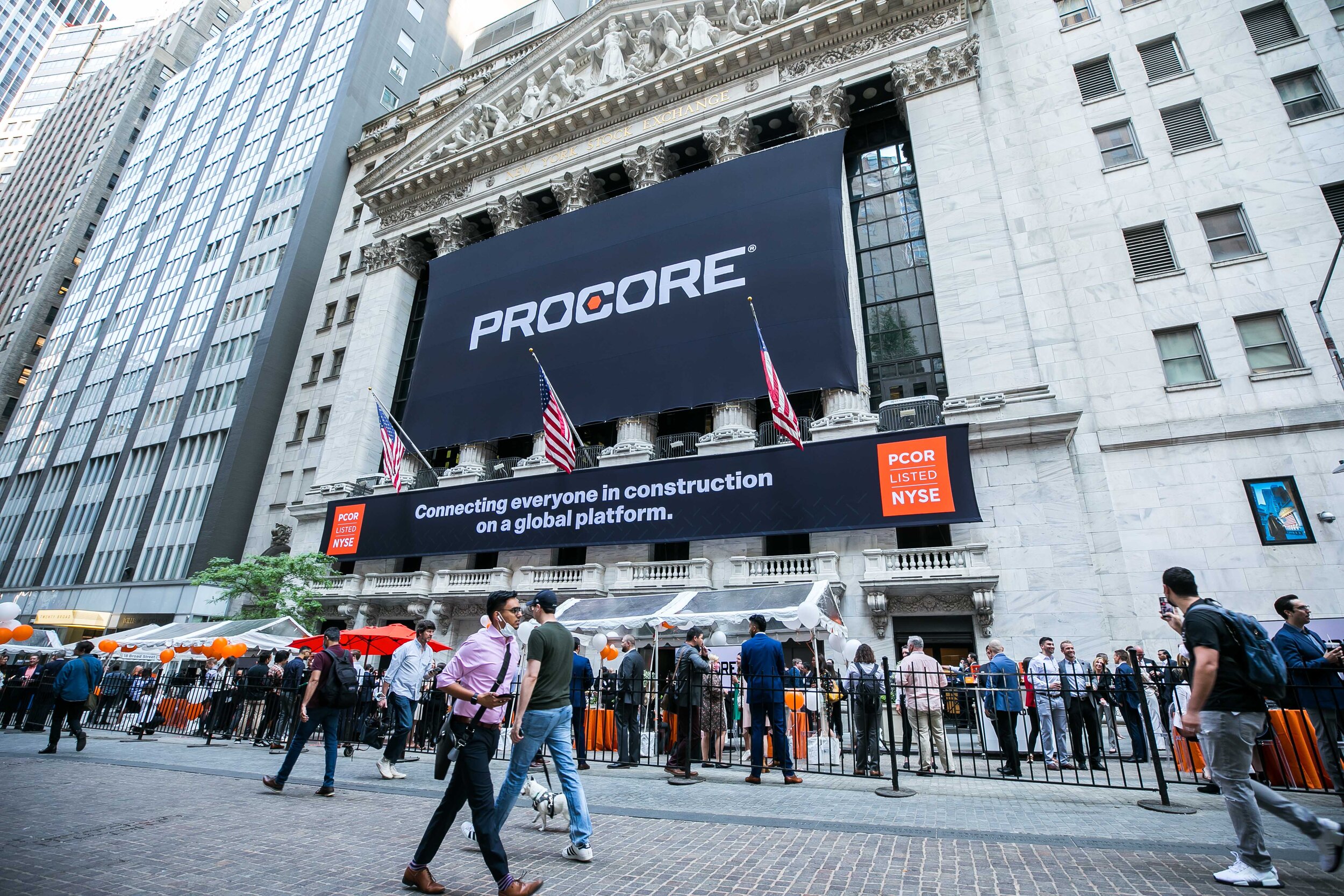2019 saw continued advances across many sectors of construction technology. Software companies continue to be gobbled up, as consolidation and integrations are helping to streamline resources for contractors. Some robotics have made their way to the jobsite, though they’re still not ready to make a significant impact just yet.
Overall, I get the feeling that there are many start ups and other technology companies that are finally getting a firm grasp of how to handle the construction industry. It’s a much different environment and requires different skills and marketing as compared to the consumer market, but it seems like great progress is being made.
Below, in no particular order, are 11 of the most interesting construction technology stores of 2019. As always, if you think we missed something, tell us in the comment section below!
New Exoskeleton Vests Makes Repetitive Tasks and Overhead Work a Breeze
The EksoVest, by Ekso Bionics, is an upper body vest designed to elevate and support a worker’s arms for tasks at chest heights and above. Through the use of springs, it provides up to 15 pounds of lift assistance per arm. That’s enough to make most power tools feel like nothing.
One of the best parts about the system is that it’s all mechanical, so it doesn’t need a power source to operate. Just strap in on and go to work. Weighing in at only 9.5 pounds, it should light enough to wear comfortable all day.
There are so many construction applications that this technology seems like a real win, including overhead drilling, grinding, chipping, running conduit, refrigeration and plumbing lines, and even just lifting.
Smart Hard Hats Had Some Ups and Downs
For over 3 years now, Trimble has been teaming up with Microsoft to make the mixed reality headset, the Microsoft HoloLens, a viable and useful tool for the construction industry. With Microsoft’s announcement of their next-gen headset, the HoloLens 2, Trimble also made an announcement about the impending release of a new wearable hard hat compatible device featuring the HoloLens 2.
The Trimble XR10 with HoloLens 2 was announced at MWC Barcelona, which is the largest mobile event in the world, alongside Microsoft on February 25, 2019. Its upgraded features over the first generation device include a wider field-of-view, a flip-up viewscreen, and improved usability.
In addition to the hardware being upgraded, Trimble also announced that they will be expanding their software offering for the construction industry. Currently, Trimble offers Trimble Connect, their mixed reality platform; SketchUp Viewer, for model viewing; Connected Mine, for mine work; Trimble SiteVision, for site work; and Trimble PULSE Remote Expert, augmented reality for connecting with experts off the jobsite through audio, video, and text in real-time.
So while developments involving the HoloLens seem to be on the right track, the industry lost one of its highly-invested smart hard hat manufacturers, named DAQRI. Towards the end of the year, reports surfaced that the maker of the DAQRI Smart Helmet had laid off its employees and was in the process of selling off its assets after surviving for 10 years. They gave it a good run and we’re sad to see them go.
The Weird, Creepy Robot Dog That Will Inspect Your Construction Site
SPOT, as the robot dog from Boston Dynamics is called, can climb stairs, open doors, avoid collisions, and even pick itself up if it happens to fall. Perhaps more importantly, it can carry up to 31 pounds, making it potentially very useful on the jobsite once it’s customized with gadgets like sensors and cameras for progress tracking. If you’re not about strapping more gadgets to your robot, then you can make it do manual labor 30 pounds at a time.
Sporting a swappable battery that can last up to 90 minutes, SPOT can travel as fast as 3 miles per hour. It can operate between temperatures of -4F to 113F and has water and dust resistance rating of IP54. That’s decent, but you’re not going to want to leave this dog out in the rain.
In September, it was announced that Spot would be made available to certain industries, like construction, and, more specifically, to contractors that have specific use cases. Soon after that announcement, 360-degree photo documentation software, HoloBuilder, announced a partnership with Boston Dynamics and the release of SpotWalk, an app that allows Spot to autonomously walk the jobsite and collect photos.
Autodesk’s Simplification of their Construction Software
Autodesk is a juggernaut in the design community, but up until their very strategic acquisitions of PlanGrid, Assemble, and BuildingConnected in 2018, they did not have a strong foothold on the construction side.
In 2019, Autodesk doubled down on their efforts to appeal to contractors and, most of that effort was spent on simplifying their product offerings, as well as integrating all of their new software into each other.
First, Autodesk announced the combination of BIM 360’s Docs, Field Managaement, and Project Management into one mobile interface in the middle of the year.
Next, at Autodesk University in November, the company announced a new cohesive platform called Autodesk Construction Cloud, which combined BIM 360, PlanGrid, Assemble, and BuildingConnected under one roof.
The company also released many updates throughout the year, highlighted by PlanGrid BIM and dozens of updates for all 4 of the Autodesk Construction Cloud products.
Mortenson Announces Partnership with Operator-less Equipment Maker Built Robotics
In 2017, Built Robotics made headlines as they debuted their self-driving track loader on a test construction site. In June of this year, the company announced a formal long-term partnership with construction giant Mortenson to deploy their machines on remote sites.
Announced at ENR FutureTech, the deal between Mortenson and Built Robotics is focused on providing earthmoving functions on renewable energy projects, such as wind and solar farms. These types of projects tend to be in secluded area, outside of areas with an established workforce. The jobs tend to have a lot of repetitive work, which can be ideal for autonomous vehicles at this stage in their development.
Procore Acquisitions and New Products
Like Autodesk, Procore made recent acquisitions, highlighted by the acquisitions of owner software, Honest Buildings, and analytics software, ConstructionBI. Both helped the company round out its software for a true end-to-end solution.
In addition to the acquisitions, Procore several product enhancements throughout the year, such as Procore BIM and the Embedded Experience, which allows the full version of 3rd party applications to be used directly within the Procore Platform.
At Groundbreak 2019, the company announced the release of new products called Procore for Owners and Procore Analytics, both aided by the previously mentioned acquisitions. While at the conference, I was also able to get an inside look at how they function.
The Mace Group Built 6-Story, Rising Prefab Factories On Top of Under Construction High Rises
I don’t know if this necessarily fits in the technology category, but it’s innovative and I find it really cool, so I’m including it.
The Mace Group, which has hubs in Europe, Middle East and North Africa, North America, Sub‑Saharan Africa and Asia Pacific, recently turned over a project in London that featured rising pre-fabrication factories that sat atop two of the company’s under-construction residential towers.
The factories reportedly measured 115 feet wide by 134 feet long by 108 feet high and weighed approximately 510 tons. The factory is able to “jump” as floors are completed, maintaining the same height as the building progresses.
Netherlands-Based Firm, Vertico, Successfully 3D Prints Pedestrian Bridge
3D printing is still trying to find its niche in the construction industry throughout the world and it seems as though the Netherlands is leading the pack with the technology so far, at least when it comes to pedestrian bridges.
Earlier this year, 3D printing company, Vertico, partnered up with Ghent University to produce a completely 3D-printed concrete pedestrian walking bridge. They say the technology can reduce waste by 60%, lower CO2 emissions, and create more organic shapes.
University of Michigan Engineers Strapped a Nail Gun to Do Roofing Work
Chalk this story up as the most terrifying example of construction technology on our list, although it’s pretty interesting that the experiment turned out fairly successful. Drones are used for many aspects of construction currently, but several students at the University of Michigan were not satisfied with the status quo, so they decided to strap a nail gun to one and send it on its way.
While this is certainly not market ready –or even a real-life application-- it does illustrate that drones can be programmed to certain paths and gives a glimpse of how they could be used in the future.
Construction Robotics Company, Toggle, Raises $3MM for Rebar Fabricating Robot
Placing, bending, and tying rebar can be an extremely labor intensive process. It can also be very repetitive, which makes it a candidate for robotic automation. A relatively new construction technology startup is hoping to break into the space after raising some substantial seed funding in late 2019.
Founded in 2016 by Daniel Blank and Ian Cohen, Toggle is a” robotics and automation solution for rebar fabrication and assembly,” as self-described by their website. The company touts that their solution doubles labor productivity and increases steel cage production five-fold.
Milwaukee Tool Announces MX Fuel, a New Battery Platform for Light Equipment
MIlwaukee Tool hosts an annual media event called the New Product Symposium and this year’s event had a MAJOR announcement in the form of a new line of battery-powered light equipment. The new MX Fuel line features a 14” cut-off saw, a breaker hammer, a handheld core drill, a power supply, a tower light with 27,000 lumens of light output, and a sewer drum machine with stair climb assisting treads.
courtesy of Milwaukee Tool















Shane is the creator of Construction Junkie and an active construction project manager. In his career, he has managed interior remodel projects, site development, construction safety, governmental project compliance, and facility maintenance. He has a strong passion for construction technology and safety, as well as sharing the knowledge or insights he has gained throughout his career.